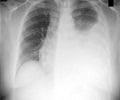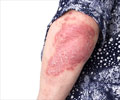Growing resistance to available tuberculosis (TB) drugs is threatening the world with a new untreatable strain of the deadly disease, experts said at a global lung health conference on Thursday.
"The danger is real," Mario Raviglione, director of the World Health Organisation's Stop tuberculosis (TB) department, told AFP on the sidelines of the gathering of some 3,000 health experts from 100 countries in Cape Town."Scenarios of an apocalyptic nature are not likely ... but not impossible." Raviglione said two or three cases were recently reported in Italy of TB resistant to all available drugs. All were fatal.
"There are situations that push us back to the pre-antibiotic era of 1943 ... when there was nothing against tuberculosis except bed rest, and in Europe and North America sanatoria and good nutrition and things like that."
Some two billion people worldwide are infected with TB, about 450,000 of them with a drug resistant strain. About 1.6 million die each year, one every twenty seconds.
A total of 41 countries have reported at least one case of extreme-drug resistant (XDR) TB. This figure may be higher, as many African countries lack laboratories capable of detecting this hard-to-treat strain, said Raviglione.
TB drug resistance develops when patients fail to complete their treatment, and can also be directly transmitted from person to person.
Advertisement
Raviglione said there was a less than five percent chance of a completely drug resistant strain becoming dominant.
Advertisement
It was difficult to predict whether new drugs would be developed in time to prevent large-scale resistance, he added.
"You really have to think about a new regimen. We must have at least another three or four classes of antibiotics to be safe on this.
"I don't foresee that anything like that will be available before 2015," Raviglione said, adding XDR TB would in the meantime continue spreading in places like the former Soviet Union and in Africa, hand-in-hand with AIDS.
TB was the leading cause of death among an estimated 40 million people infected with the HI Virus worldwide, with about 12 million suffering from both.
Raviglione said the TB epidemic appeared to be peaking worldwide at around 8.8 million new active cases per year. But despite the apparent levelling-off of the death rate, Raviglione said there was there was no sign on the horizon of the disease being eliminated.
The development of new vaccines, drugs and diagnostic tools was the only solution, delegates concurred.
The conference heard that seven new candidate drugs were entering clinical trials, while a vaccine was being developed in hopes of hitting the market in about 10 years' time.
The only existing vaccine, BCG, was developed in the 1920's and saved the lives of an estimated 70,000 children out of 100 million vaccinated every year.
The new vaccine, said Jerald Sadoff, president of the Aeras Global TB Vaccine Foundation, should be at least 70 percent more effective.
Giorgio Roscigno, chief executive of the non-profit Foundation for Innovative New Diagnostics, said much more money was needed to stave off disaster.
"We really need more investment, particularly from governments, to match at least the philanthropic commitment," he told journalists.
Source-AFP
SRM/C











